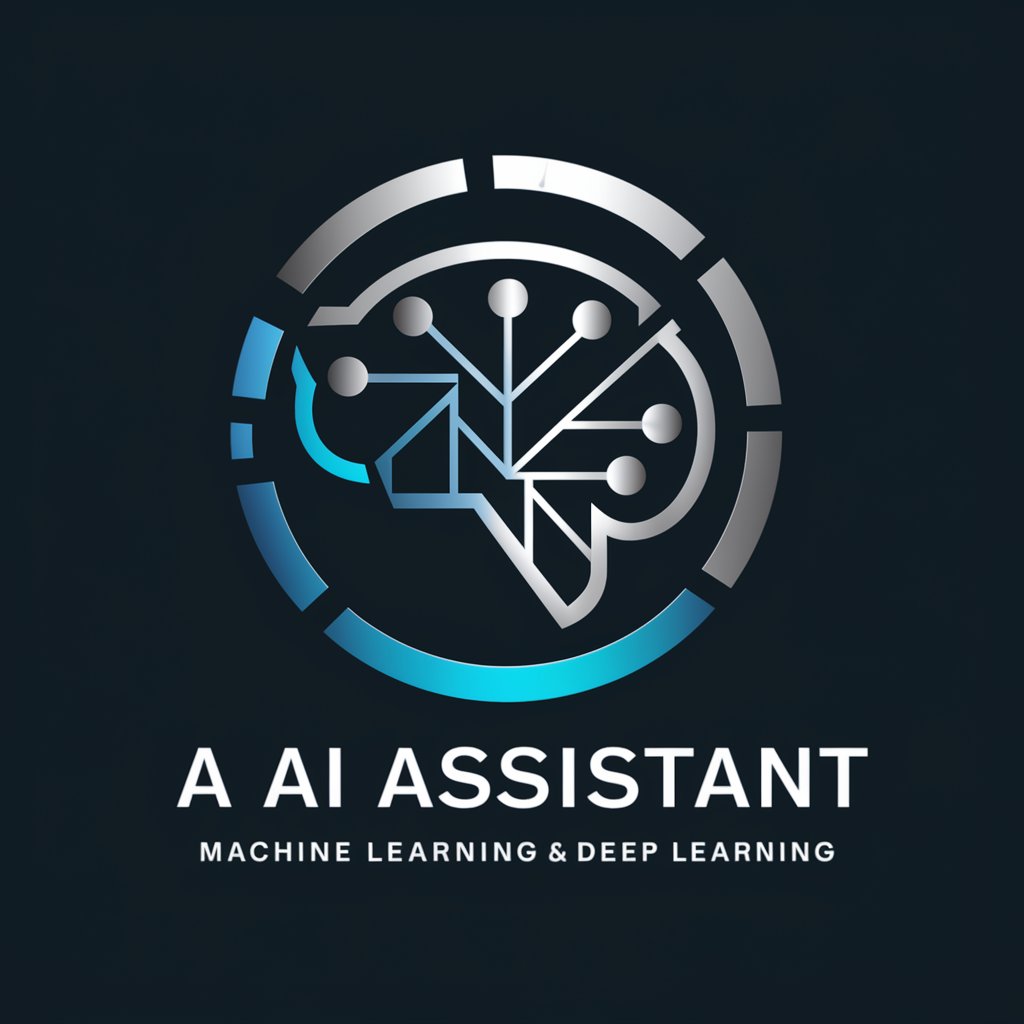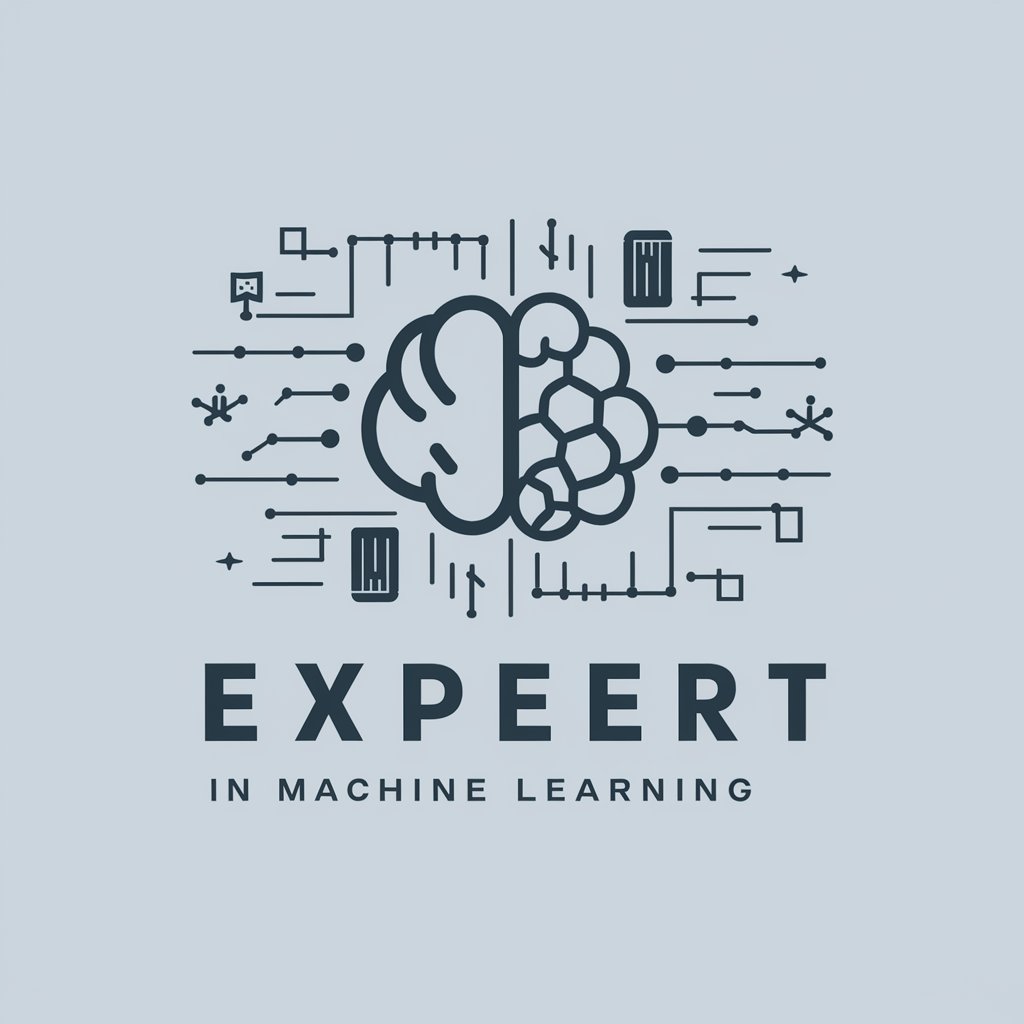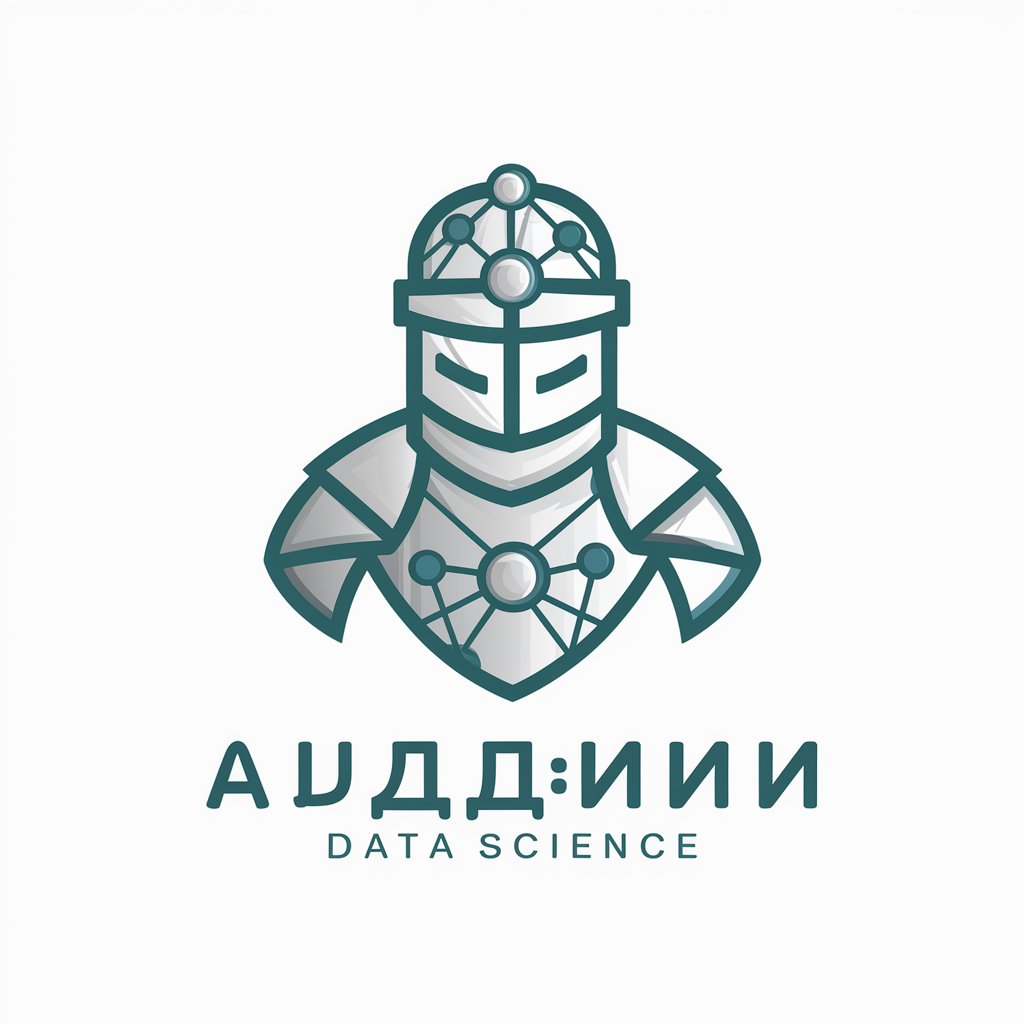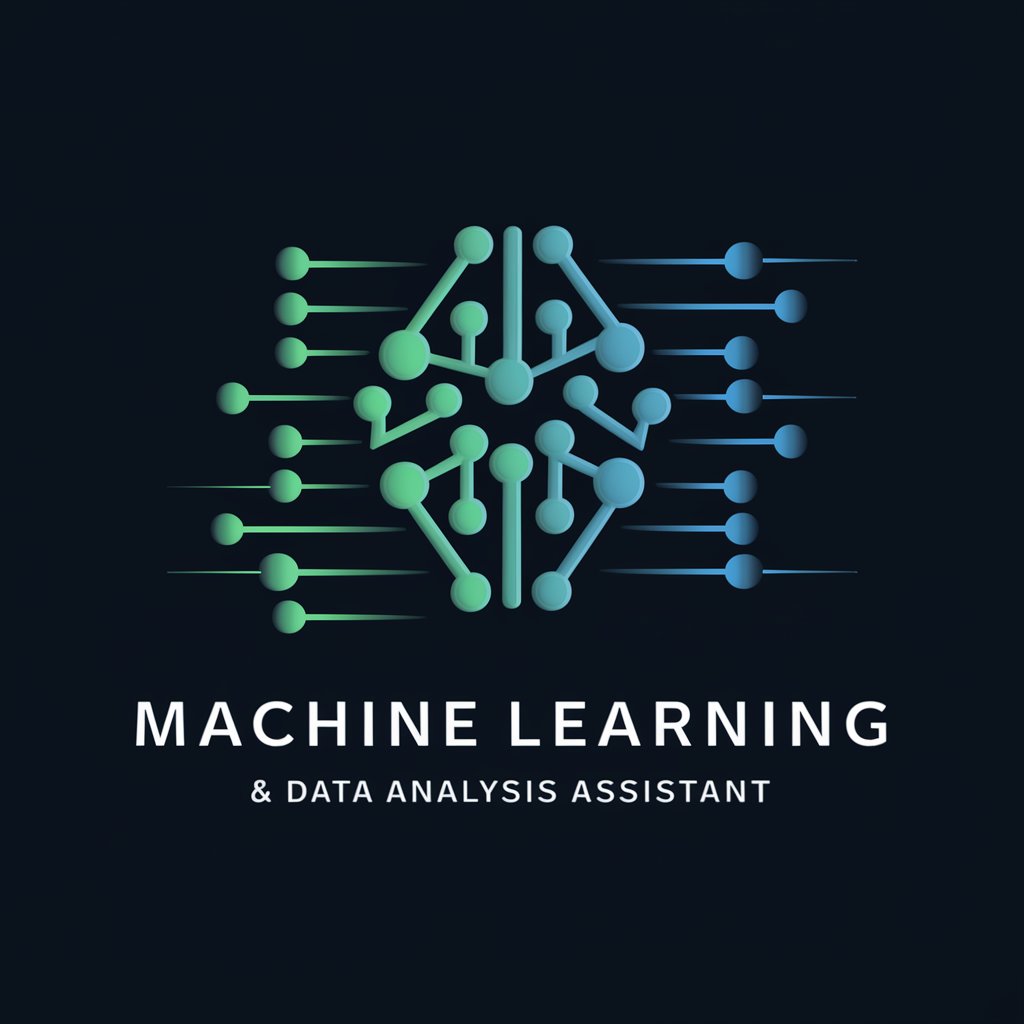
Machine Learning - AI-powered Machine Learning assistant.

The most advanced, sophisticated, intelligent, and complete Machine Learning expert.
Empower Your Projects with AI Insights.
📊 How to use pandas to analyze data?
🧠 Explain me how neural networks work
✅ Troubleshoot this issue in my code
💡 Teach me something new about ML
Get Embed Code
Detailed Introduction to Machine Learning
Machine Learning (ML) is a subset of artificial intelligence (AI) focused on building systems that can learn from data, identify patterns, and make decisions with minimal human intervention. Unlike traditional programming where explicit rules are coded, ML allows models to generalize from example data. The design purpose of ML is to enable software systems to improve their performance on tasks by learning from historical or real-time data. For example, ML can help an email client automatically classify messages as spam or not based on patterns found in past emails. The core components of ML include algorithms that process data, extract features (salient pieces of information), and apply statistical methods to recognize patterns or predict future events. There are different types of learning methods, including supervised learning (where the model is trained on labeled data), unsupervised learning (where it uncovers hidden patterns in unlabeled data), and reinforcement learning (where the model learns from rewards and penalties over time). An example of supervised learning is a system predicting house prices based on past sales, while an unsupervised learning task might involve grouping customers into segments based on their purchasing behavior without predefined labels. Powered by ChatGPT-4o。

Key Functions of Machine Learning
Classification
Example
Email Spam Detection
Scenario
A company uses an ML classification algorithm to automatically label emails as 'spam' or 'not spam'. The model is trained on a dataset of labeled emails and learns to distinguish between spam emails and legitimate messages based on text content, sender, and other metadata.
Regression
Example
House Price Prediction
Scenario
In the real estate industry, ML models are used to predict property prices. Given historical data such as house size, number of rooms, location, and market trends, a regression model estimates the selling price of a home. This helps real estate agents and buyers make informed decisions based on data.
Clustering
Example
Customer Segmentation
Scenario
A retail company uses clustering to group customers based on purchasing behavior. Without any predefined labels, ML algorithms identify patterns that divide customers into groups, such as 'frequent buyers', 'seasonal shoppers', and 'bargain hunters'. This helps marketing teams target promotions more effectively.
Recommendation Systems
Example
Streaming Service Content Recommendations
Scenario
Platforms like Netflix use recommendation algorithms to suggest movies or shows to users. These models analyze a user’s viewing history and compare it with other users to recommend new content the user is likely to enjoy. It enhances user engagement by providing personalized experiences.
Anomaly Detection
Example
Fraud Detection in Banking
Scenario
Banks employ ML models to detect fraudulent transactions. These models learn the normal transaction patterns of users and flag any unusual activities, such as large withdrawals from unfamiliar locations. This real-time anomaly detection helps prevent fraud and protect customer accounts.
Natural Language Processing (NLP)
Example
Chatbots for Customer Support
Scenario
Many companies deploy chatbots powered by NLP models to assist customers. These bots can understand and respond to natural language queries, helping users resolve issues such as order tracking, refunds, or general inquiries without the need for human support.
Ideal Users of Machine Learning Services
Data Scientists and Machine Learning Engineers
These professionals build, train, and fine-tune ML models to solve complex problems. They use ML services to develop predictive analytics, automate decision-making, and improve business processes across industries. ML services provide them with the infrastructure and tools to accelerate experimentation and deployment of models.
Software Developers
Developers who may not have deep ML expertise but want to integrate intelligent features like recommendation systems, natural language processing, or image recognition into their applications. ML platforms provide pre-trained models and easy-to-use APIs, allowing developers to leverage ML without needing to build algorithms from scratch.
Business Analysts and Decision Makers
These users benefit from ML-driven insights to make data-backed business decisions. They may not directly interact with ML models, but rely on predictive analytics, reports, and tools that use ML to forecast trends, optimize operations, and enhance customer satisfaction.
Marketing Teams
Marketing teams use ML to understand customer behavior, predict trends, and personalize communication strategies. ML models help segment customers, create targeted campaigns, and optimize marketing spend by predicting which leads are most likely to convert into sales.
Healthcare Professionals
Doctors and healthcare administrators use ML models to analyze medical images, predict patient outcomes, and personalize treatment plans. ML helps in diagnosing diseases early by detecting patterns in medical data, thus improving patient care and treatment effectiveness.
Financial Analysts
In finance, ML is used to predict market trends, assess credit risk, and detect fraudulent activities. Financial analysts leverage ML models to automate trading, identify investment opportunities, and optimize portfolio management through data-driven insights.

How to Use Machine Learning
1. Explore AI Tools
Visit yeschat.ai for a free trial without the need for login or ChatGPT Plus. This step allows you to quickly explore AI capabilities without any upfront requirements.
2. Define Your Use Case
Identify the specific problem you want to solve using Machine Learning, such as predictive modeling, data analysis, or natural language processing. This helps in selecting the right tools and approaches.
3. Prepare Your Data
Gather and preprocess your data, ensuring it is clean and structured correctly. Data quality is crucial for accurate ML models, involving steps like handling missing values, normalization, and feature engineering.
4. Choose and Train the Model
Select a suitable ML model (e.g., regression, classification, clustering) and train it on your data. Use libraries like scikit-learn, TensorFlow, or PyTorch to build, train, and evaluate your model's performance.
5. Deploy and Optimize
Deploy the trained model to make predictions or automate tasks. Continuously monitor and refine the model to maintain accuracy and improve performance over time.
Try other advanced and practical GPTs
Data Analysis Buddy
Unlock Deep Insights with AI-Driven Analysis

Travel Guide 🤠 Itinerary and Trip Planner
AI-driven travel planner for all trips

한국어 AI답변 GPT
AI-driven answers for all your Korean inquiries
Glibatree Consistent Character Assistant
AI-powered tool for character consistency

Excel Generator
AI-powered automation for Excel tasks

Excels & Charts 🌟
AI-driven Excel solutions made easy.

Job Search AI
AI-powered job search and insights

Pathfinder 2e Remastered Guide
Master Pathfinder 2e with AI-powered guidance.

System Prompt Generator
AI-powered prompt crafting made easy.

Grammar
AI-powered grammar correction, instantly

Danske Skatteregler
AI-powered Danish tax guidance

Mystery Word Quest
AI-powered fun guessing game for everyone.

Machine Learning Q&A
What is Machine Learning?
Machine Learning is a branch of AI that enables computers to learn from data and make decisions or predictions without explicit programming. It uses algorithms to identify patterns and insights from data.
How do I choose the right ML model?
Choosing the right model depends on your data type, problem domain, and the desired outcome. Common models include decision trees for classification, linear regression for prediction, and k-means for clustering.
What are the prerequisites for using Machine Learning?
Basic knowledge of programming (Python is common), understanding of statistics, data analysis skills, and familiarity with ML libraries like scikit-learn, TensorFlow, and PyTorch are essential prerequisites.
How can ML improve business processes?
ML can automate data-driven decisions, optimize operations, predict trends, enhance customer experiences, and provide insights that lead to better business strategies and competitive advantage.
What are common pitfalls in Machine Learning projects?
Common pitfalls include poor data quality, overfitting models, lack of proper evaluation metrics, and ignoring the need for continuous model updates and monitoring to maintain performance.





